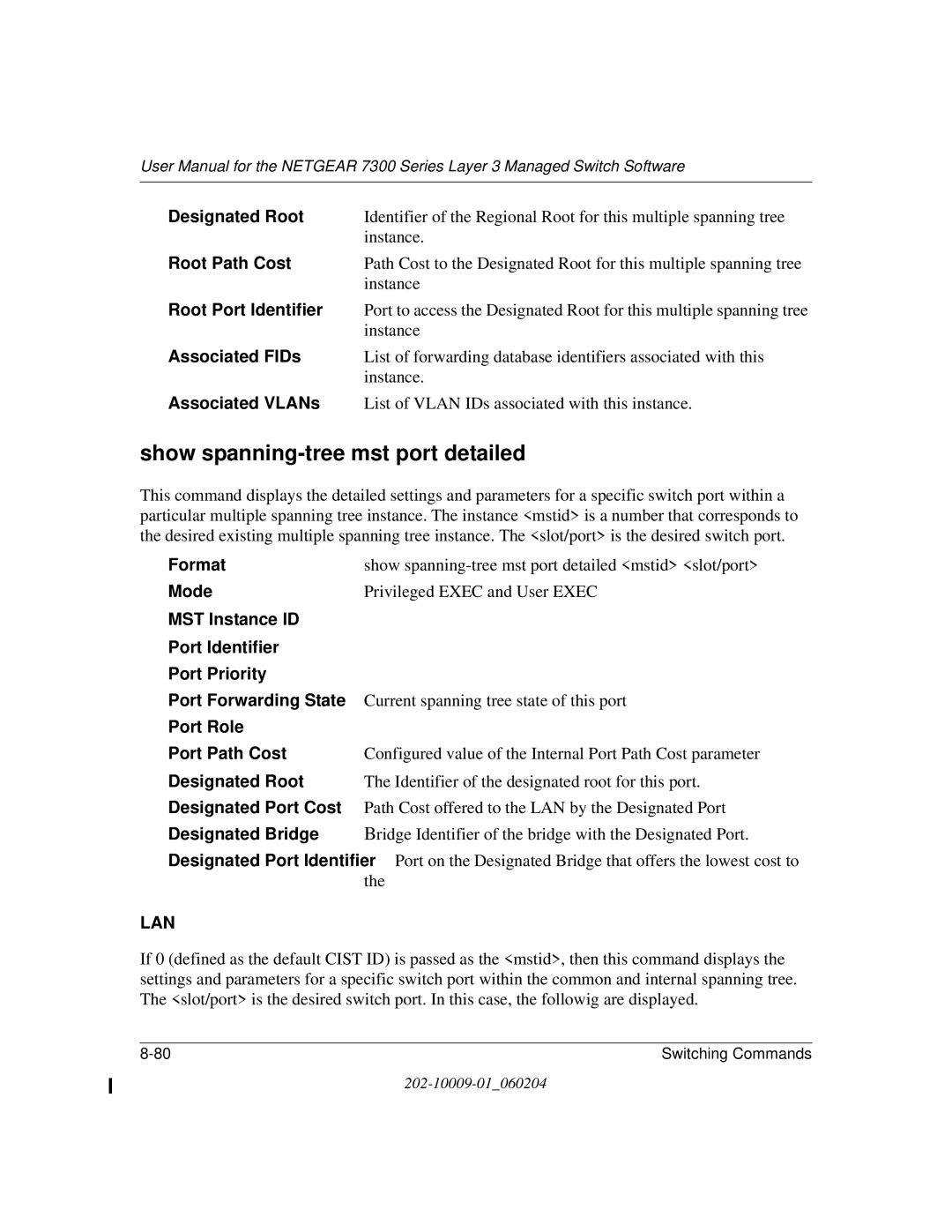
User Manual for the NETGEAR 7300 Series Layer 3 Managed Switch Software
Designated Root | Identifier of the Regional Root for this multiple spanning tree |
| instance. |
Root Path Cost | Path Cost to the Designated Root for this multiple spanning tree |
| instance |
Root Port Identifier | Port to access the Designated Root for this multiple spanning tree |
| instance |
Associated FIDs | List of forwarding database identifiers associated with this |
| instance. |
Associated VLANs | List of VLAN IDs associated with this instance. |
show spanning-tree mst port detailed
This command displays the detailed settings and parameters for a specific switch port within a particular multiple spanning tree instance. The instance <mstid> is a number that corresponds to the desired existing multiple spanning tree instance. The <slot/port> is the desired switch port.
Format | show |
Mode | Privileged EXEC and User EXEC |
MST Instance ID |
|
Port Identifier |
|
Port Priority |
|
Port Forwarding State | Current spanning tree state of this port |
Port Role |
|
Port Path Cost | Configured value of the Internal Port Path Cost parameter |
Designated Root | The Identifier of the designated root for this port. |
Designated Port Cost | Path Cost offered to the LAN by the Designated Port |
Designated Bridge | Bridge Identifier of the bridge with the Designated Port. |
Designated Port Identifier Port on the Designated Bridge that offers the lowest cost to the
LAN
If 0 (defined as the default CIST ID) is passed as the <mstid>, then this command displays the settings and parameters for a specific switch port within the common and internal spanning tree. The <slot/port> is the desired switch port. In this case, the followig are displayed.
Switching Commands |
